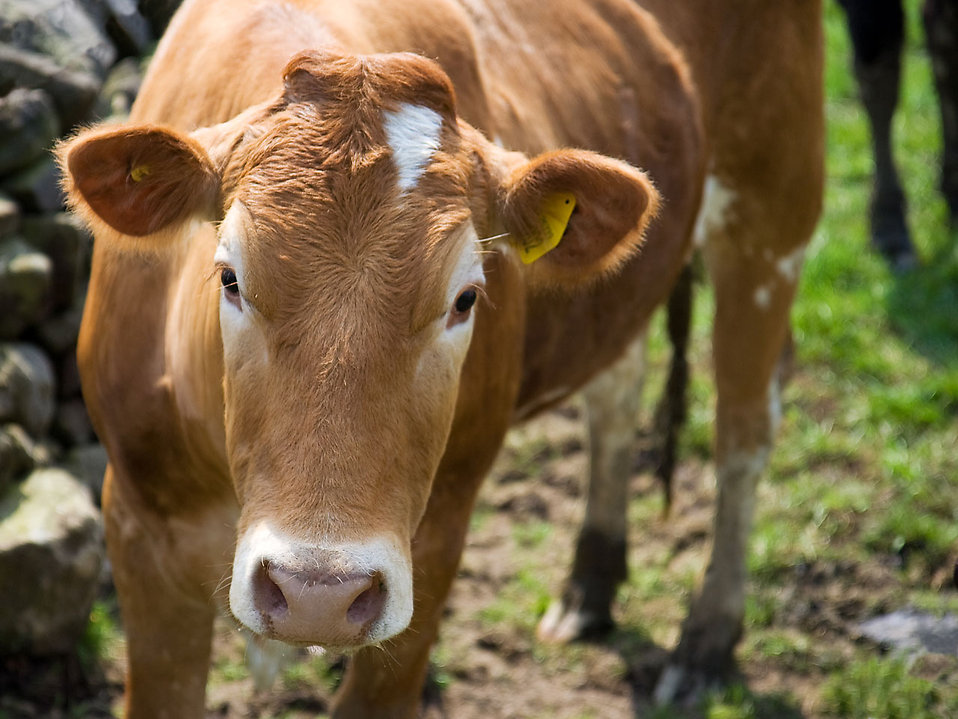
Original article by Glen Herud, the founder of the Happy Cow Milk Company. Read more here
Tuesday, March 26, 2019 - There's quite a bit of research into the psychology of cows, and it shows there is a lot more going on inside a cow's mind than you may think.
and it shows there is a lot more going on inside a cow's mind than you may think.
While any dairy farmer will be able to identify a cow that's content and happy, academics are able to clarify the fuzziness around cow happiness with quantifiable metrics.
Researchers tend to focus on cows’ positive and negative feelings and the intensity of these feelings in order to make conclusions on cows’ emotions.
Researchers measure cortisol levels, skin temperature, sounds, defecation, heart rate and eye white percentage to determine the cow's feelings.
The percentage of eye white showing is a reliable indicator of positive or negative emotion. When cows are calm the top eyelid drops, reducing the percentage of eye white visible. Stressed or fearful cows have their eyelids open, as they are more alert.
Using these indicators, researchers run all sorts of experiments and measure the emotional responses of the cows.
Researchers run experiments such as adding a foreign object or cow into the cow's environment. They create problem-solving experiments to see how the cows will solve them. Can the cows remember how to solve the problem months later?
How do cows respond to being removed from the herd? How do they feel when put into unfamiliar environments or in with unfamiliar cows? Can they solve the problems in unfamiliar or stressful situations?
What happens to the mother’s stress levels when her calf is removed? How does she react when the calf is returned? How does the calf feel?
Researchers have answers to all these questions.
Cows have individual personalities that can be measured using the factors used to determine human personality types such as openness, conscientiousness, extroversion, agreeableness and neuroticism.
I had a few cows that would be high in neuroticism; they were quick to become unsettled or startled. They became stressed and fearful if I separated one of these cows, while other cows just seem to go with the flow and seemed unfazed by non-routine events.
The cows you never really noticed tend to be high in agreeableness. You don't notice them because they just do what you want them to. Alternatively there is always one or two cows who seem to do everything reluctantly.
Some cows have friends and some cows avoid each other at all costs. Often cows clump together in little cliques of 20 to 30 cows. GPS collars and data from robotic milking systems confirm these observations.
So cows have a range of emotions, they have personalities and friends, why does this knowledge of cows’ emotions matter?
For some farmers, it only matters if a happy cow produces more milk. But it matters because treating farm animals well and giving them environments where they are content and fulfilled is simply the right thing to do.
Farmers need to design their farming systems around the factors that enable cows to be happy and to be able to prove that their systems are actually happy places for cows.
This research gives farmers facts that they can use when their farming practices are challenged.
Learn more at this Link